Warning: Undefined variable $k in /home/nginx/domains/wired2fishcom.bigscoots-staging.com/public/wp-content/themes/understrap-child-0.6.0/functions.php on line 984
Warning: Undefined variable $k in /home/nginx/domains/wired2fishcom.bigscoots-staging.com/public/wp-content/themes/understrap-child-0.6.0/functions.php on line 987
As fall approaches, bass fishing enthusiasts gear up for one of the most rewarding seasons of the year. Understanding the dynamics of offshore vegetation is key to successful fishing during this transition period. In this article, we’ll break down where to find offshore vegetation, how to fish it, and the best strategies for targeting these fish as they adjust to changing water temperatures and forage patterns. By mastering the nuances of offshore vegetation, anglers can enhance their chances of landing trophy bass this fall.
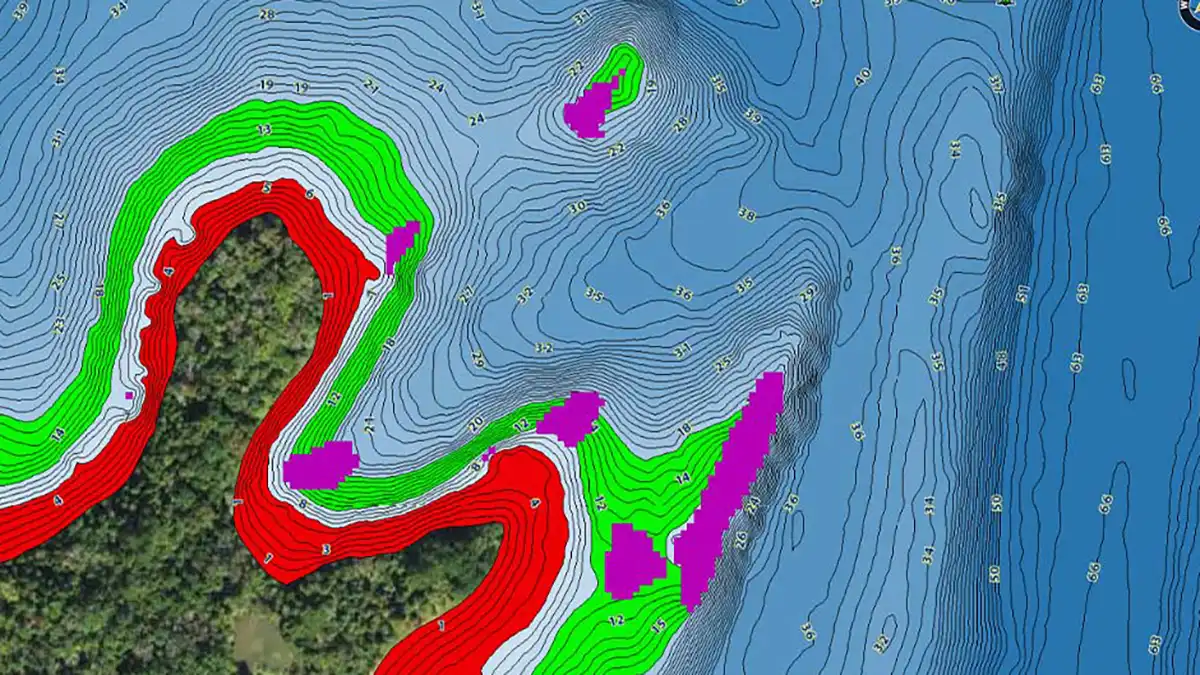
WHERE TO FIND OFFSHORE GRASS
The first step in a successful day of grass fishing is knowing where to find it. This can vary on different bodies of water depending on current, light penetration and bottom composition. Some lakes, such as Guntersville, are covered in grass from dam to dam. However fisheries such as Lake Chickamauga only have grass in specific locations. Knowing how to find this productive grass is where the majority of anglers go wrong this time of year.
Grass typically grows in protected areas out of the current. Focusing on creeks, bays and the backs of pockets is a great place to start when looking for submerged vegetation. Throughout the fall, I like to focus on areas that have deep water access. These can be locations such as main lake pockets or points, and they typically hold bass as they transition into their fall patterns. Locating these offshore sweet spots without electronics require lots of time on the water, however side scan and other technological advancements have helped cut down on this wasted time.
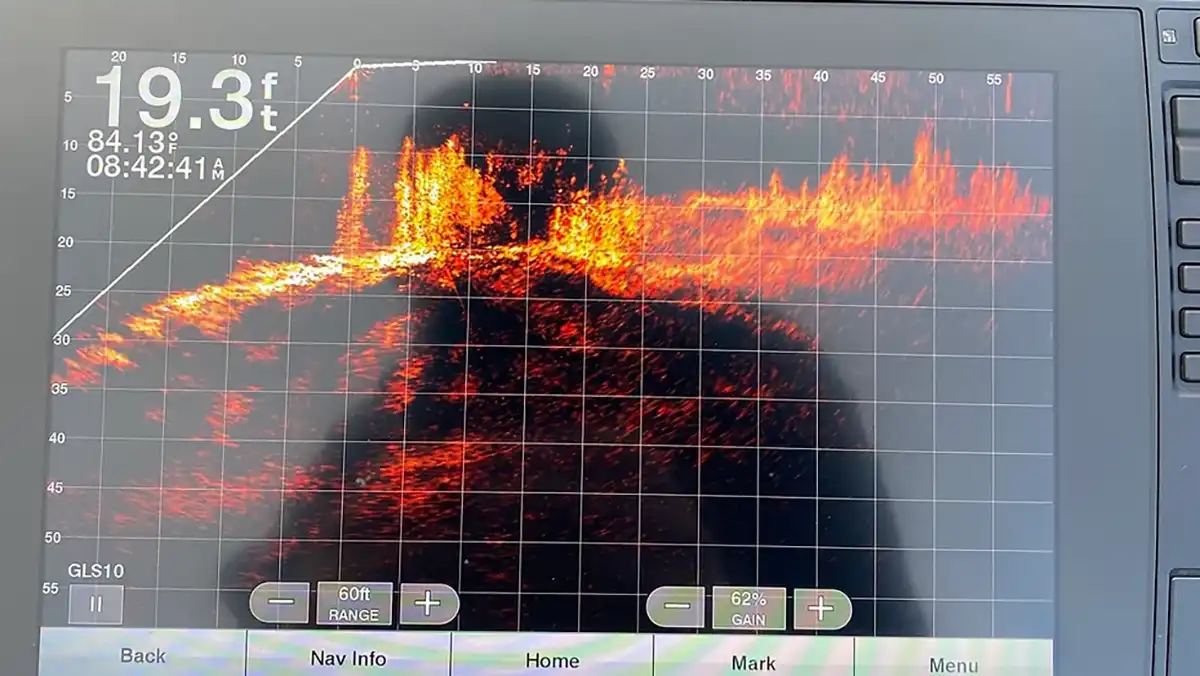
USING YOUR ELECTRONICS
I rely heavily on my Humminbird Mega Side Imaging whenever I’m looking for submerged vegetation. Idling through these high percentage areas is the most productive method I have found for locating offshore vegetation. I typically start by checking a variety of spots until I find an area with grass, then I’ll check similar locations on my Lakemaster mapping. Once I’ve found an area with submerged vegetation, I’ll use forward-facing sonar to find the individual fish scattered within the grass.
Bass relate to vegetation differently depending on a wealth of different factors. This can be anything from light penetration to water color, and it largely determines the best way to target these fish. Looking for cruising fish using forward-facing sonar is a great way to get bit in the fall. Bass will also hold tight to grass this time of year, typically in thicker, more isolated clumps. These fish are best targeted using bottom baits such as a Texas rig or heavy jig due to the heavy cover they’ve surrounded themselves in.
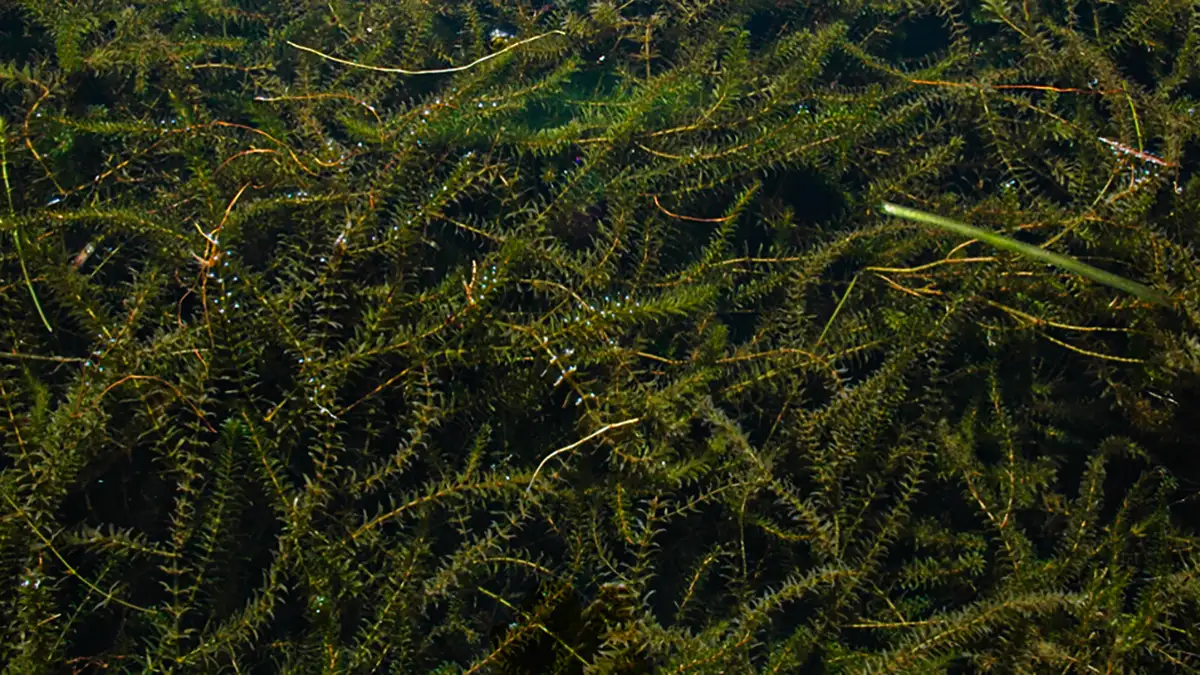
FINDING IRREGULARITIES
One of the best ways to consistently locate productive offshore vegetation is by looking for irregularities within the grass. Targeting offshore grass is often intimidating, especially when it covers the vast majority of the lake. Using your electronics to detect subtle differences in the grass is an easy way to break down this expansive type of cover. These irregularities can be anything from a hole in the grass to a hard grass edge, and it gives bass the perfect place to congregate.
Targeting isolated patches of grass is another easy way to cut down on dead water. These isolated patches are typically found along grass edges or points, and they provide the perfect ambush location for bass during the fall transition. Bass typically hold tight to the grass, waiting for baitfish and other types of prey to ambush. Using a reaction bait such as a jerkbait or vibrating jig is typically best in this scenario.
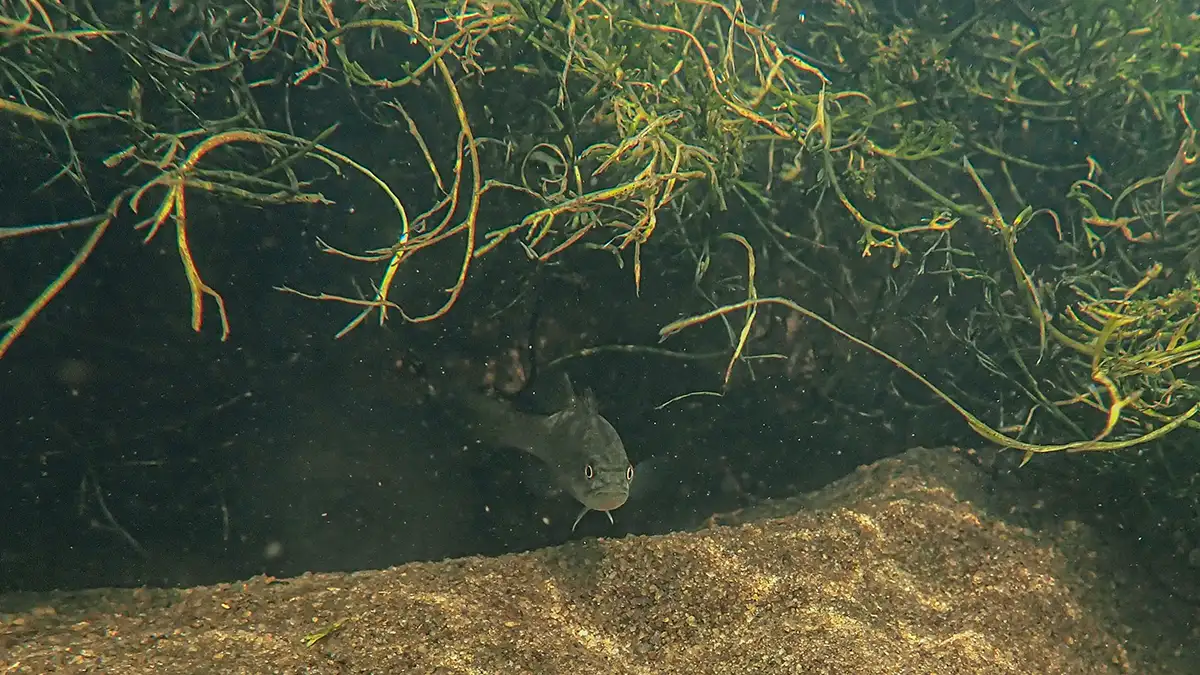
LOOK FOR LIVE GRASS
Another important factor in fall grass fishing that often gets overlooked is finding live grass. As we enter into the fall season and water temperatures begin to cool, vegetation begins dying off in your local fisheries. This die off creates lots of dead water, and it congregates bass around the remaining live grass. This is a great way to catch both numbers and quality throughout the fall transition.
Not only does live grass provide fish with ample amounts of cover, but it also provides clean, oxygenated water. This attracts prey such as panfish and shad, causing live grass to be a high-percentage location as vegetation begins to dwindle. One of the best ways to determine if the grass your fishing is alive or not is by snagging it with a lure. If the grass comes back as a vibrant green color it’s alive; however if it’s slimy or brown it’s likely dead. This is a great way to cut down on wasted time when targeting grass in the fall.
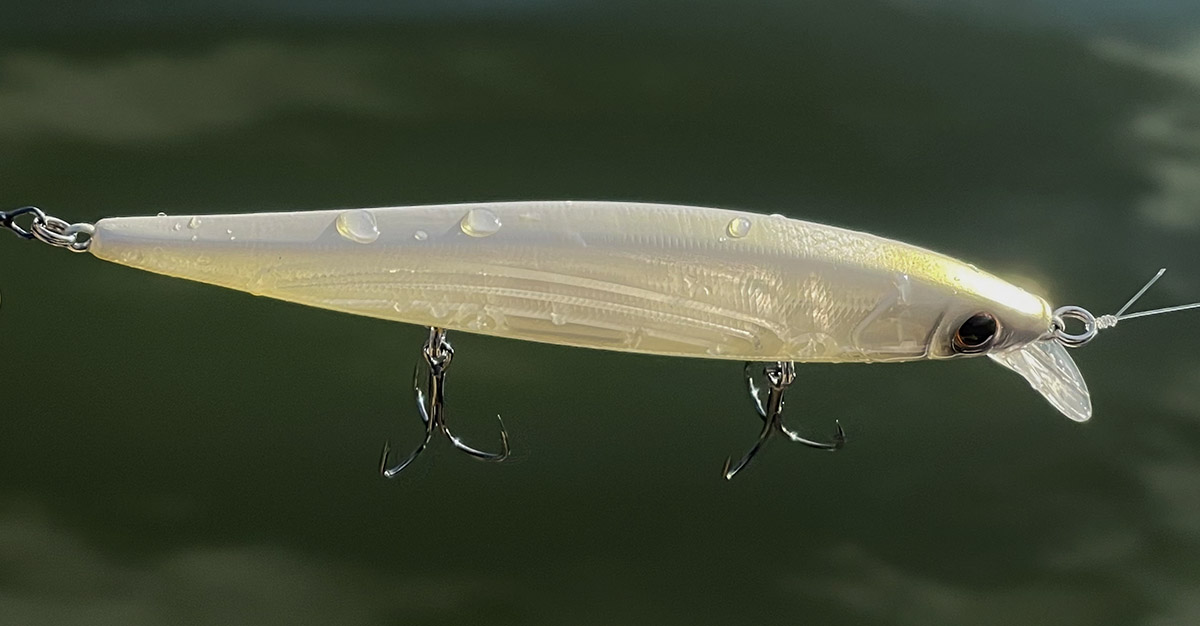
BAIT SELECTION
Last but certainly not least, proper bait selection is essential to having a successful fall outing. Bass are primarily keyed in on baitfish this time of year, therefore I primarily rely on reaction baits. While this may be true, I still use a variety of bottom baits this time of year when the opportunity presents itself. Whenever I’m fishing offshore grass in the fall, I’ll always have a jerkbait tied on. This is the perfect lure for imitating the type of forage bass are feeding on this time of year, and it works exceptionally well around vegetation. One of my favorite jerkbaits to use when targeting offshore vegetation is the Berkley Stunna 112. This baits erratic action and strong Fusion 19 treble hooks is perfect for coaxing big bass out of thick grass.
Another lure I love to use around the fall is a jig. This bait excels in a variety of scenarios, however I really enjoy this bait whenever offshore vegetation is involved. Stroking a jig in and around thick clumps of grass is a great way to catch fish buried deep in the grass. I prefer to cast my jig into the grass, employing a series of quick jerks as I work it to the boat. This bait typically gets bit right after you rip it out of the grass, often resulting in a thrilling hook set. Some of my favorite jigs for targeting offshore vegetation include the Outkast Tackle Cage Feider jig and the Dirty Jigs Luke Clausen flipping jig.
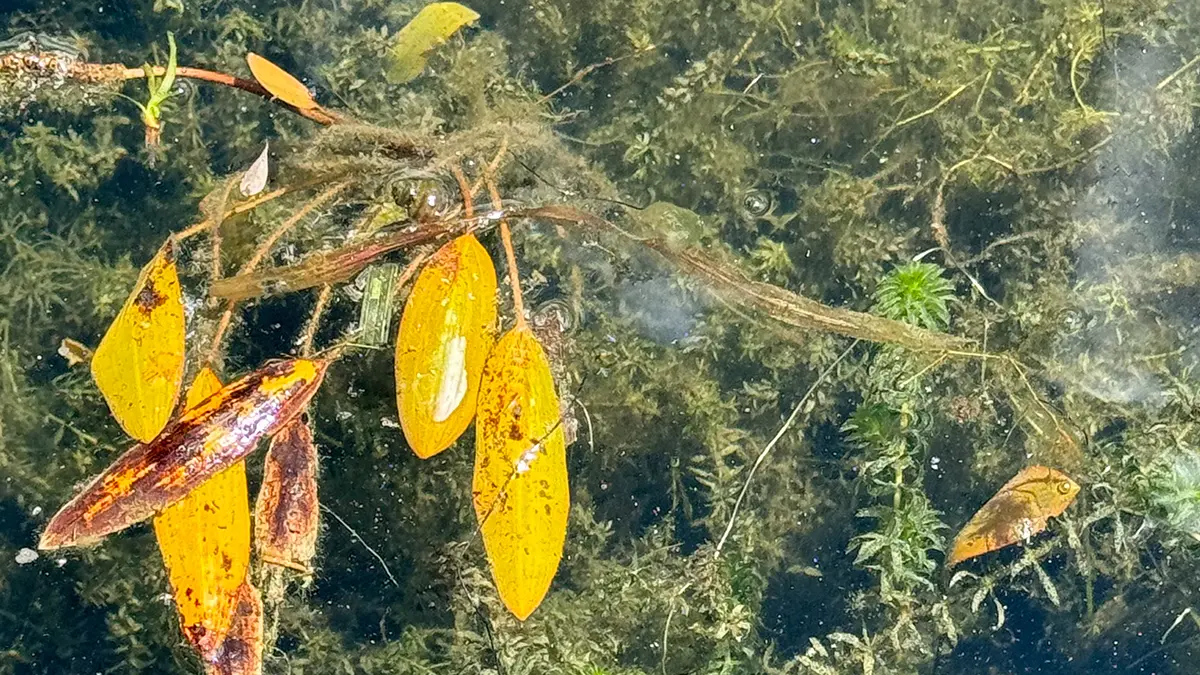
WHY YOU SHOULD FISH OFFSHORE GRASS
Fishing offshore grass during the fall presents a unique opportunity for anglers to connect with bass as they transition into their winter patterns. By understanding the nuances of vegetation and how it affects bass behavior, anglers will catch more bass throughout the fall season. Whether targeting submerged vegetation on shallow flats or exploring the deep grass lines, the key lies in finding irregularities within the grass. Keeping these easy tips in mind while fishing offshore grass is an easy way to catch a few extra bass this fall season.












